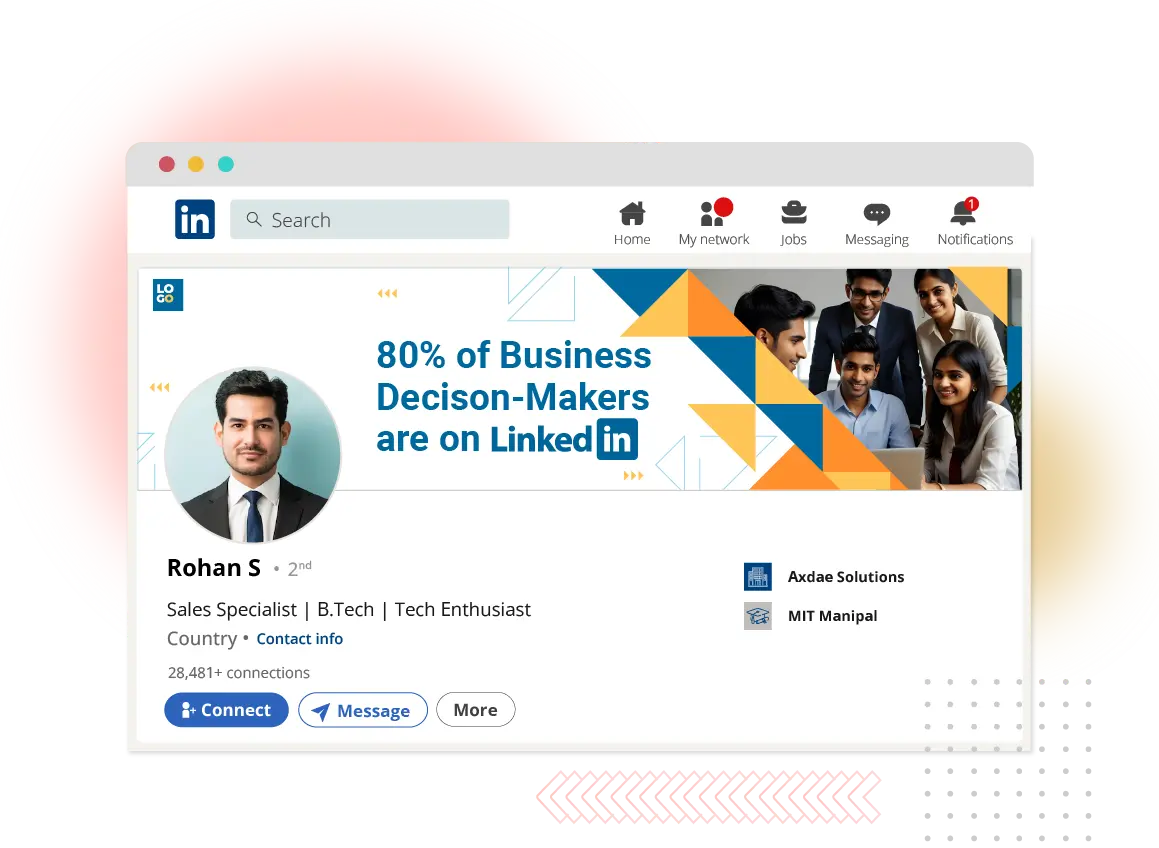
Today, leadership extends beyond boardrooms and conference halls. The modern executive is expected to wield influence online, particularly on LinkedIn—the undisputed hub for professional networking. A strong LinkedIn presence isn’t just about visibility; it’s about shaping conversations, inspiring industries, and building lasting brand influence. Yet, many executives struggle with how to position themselves as an industry expert on social media. The answer lies in a strategic blend of thought leadership, social branding, and CXO influence.
Thought leadership is more than a buzzword; it’s a credibility currency. Establishing yourself as a go-to expert in your field means consistently delivering value, insights, and unique perspectives that challenge conventional thinking. This begins with:
Your LinkedIn profile should be more than a digital resume. It should reflect your mission, impact, and the expertise you bring to the table. A compelling profile starts with a strong headline that immediately signals your authority. The summary section should not just list your accomplishments but tell your professional story—highlighting your journey, the problems you solve, and why people should follow you. The experience section should be more than job titles; it should illustrate the tangible impact you’ve made in each role. This is the foundation of your social authority and a crucial aspect of social branding.
Leaders who embrace their unique perspectives build stronger connections and foster meaningful engagement. Thought leadership thrives on authenticity. The most influential CXOs are not afraid to share their experiences, failures, and lessons learned. Instead of generic corporate jargon, use a conversational tone that resonates with your audience. Share insights from personal experiences, industry trends, and challenges you’ve overcome. This humanizes your brand influence and makes your content relatable.
A scattered presence weakens social authority. Your content, interactions, and engagements must align with your leadership brand. Every post, comment, and article should reinforce your expertise in your niche. If you’re a tech leader, your content should revolve around innovation, digital transformation, and leadership in tech. If you’re in finance, your focus should be on financial trends, market insights, and strategic growth. A disjointed message dilutes CXO influence and makes it harder for your audience to recognize your expertise. Consistency builds trust, and trust is the bedrock of thought leadership on LinkedIn.
Executives often wonder how to go beyond surface-level posts and truly command attention. Building thought leadership requires:
Leaders don’t just curate content—they create it. If you want to establish yourself as an authority, your audience needs to hear your unique perspective. Share forward-thinking insights on industry trends, disruptive innovations, and challenges your sector faces. Provide behind-the-scenes looks at your decision-making process and showcase how your leadership impacts the industry. By doing so, you build credibility and reinforce your CXO influence, ensuring your social branding is rooted in expertise and value creation.
Thought leadership is a two-way street. Engaging with your network through meaningful conversations demonstrates your expertise while also broadening your reach. Commenting on key industry discussions, offering thoughtful perspectives, and challenging conventional wisdom can help you carve a niche in your sector. By actively participating in discussions led by other industry leaders, you position yourself as an industry expert on social media. It’s not just about broadcasting insights—it’s about listening, responding, and contributing to evolving industry dialogues. This builds social authority and increases your brand influence in professional circles.
The modern digital audience consumes content in various ways, and an effective social branding strategy requires versatility. Combine written posts with LinkedIn articles, engage audiences with LinkedIn newsletters, and use short-form videos to capture attention quickly. Experiment with storytelling techniques to make your leadership journey relatable. Whether it's a personal anecdote, an industry case study, or a thought-provoking trend analysis, crafting content in different formats expands your CXO influence and maximizes engagement.
Remember, different formats serve different purposes—while articles position you as an in-depth thinker, videos humanize you and create a more personal connection with your audience.
A strong LinkedIn presence requires a structured approach. Here are essential social media credibility tips:
Your LinkedIn profile is your digital business card and the foundation of your social branding. A compelling headline should instantly communicate your expertise and influence. Avoid generic job titles—position yourself as an industry expert on social media by incorporating your unique value proposition.

A value-driven summary should highlight your leadership philosophy, key accomplishments, and vision. The experience section must go beyond listing roles; emphasize the impact you’ve made, the innovations you’ve spearheaded, and the transformations you’ve driven. This structured approach strengthens your social authority and boosts brand influence.
Social proof validates your credibility. Recommendations from peers, clients, and industry experts act as endorsements of your expertise. Thought leadership isn’t just about what you say—it’s about what others say about you. Endorsements for key skills reinforce your CXO influence, while testimonials add depth to your personal brand. A well-crafted recommendation from a senior leader or a well-respected industry figure can serve as a credibility amplifier, signaling trustworthiness and expertise to your audience.
Social media is a conversation, not a monologue. Executives who actively engage in discussions, respond to comments, and participate in industry dialogues position themselves as accessible and authentic leaders. A LinkedIn presence that lacks interaction weakens social authority. By engaging in meaningful exchanges, CXOs demonstrate thought leadership and build stronger connections with their audience. Prioritizing responsiveness fosters a community around your insights, further strengthening your social branding.
The fastest way to lose credibility is to turn LinkedIn into a sales pitch. True thought leadership is about providing value rather than pushing an agenda. Rather than promoting services, focus on educating, informing, and inspiring. Share content that addresses industry challenges, sparks discussion, and offers actionable solutions. This approach not only establishes trust but also cements your reputation as an industry expert on social media. Authentic storytelling, strategic content, and audience-first thinking help maintain brand influence without resorting to overt self-promotion.
Algorithms favor engagement and consistency, but true influence is built through:
Thought leadership isn’t about broadcasting expertise—it’s about creating impact. Stories have the power to humanize executives, making them more relatable, engaging, and memorable.
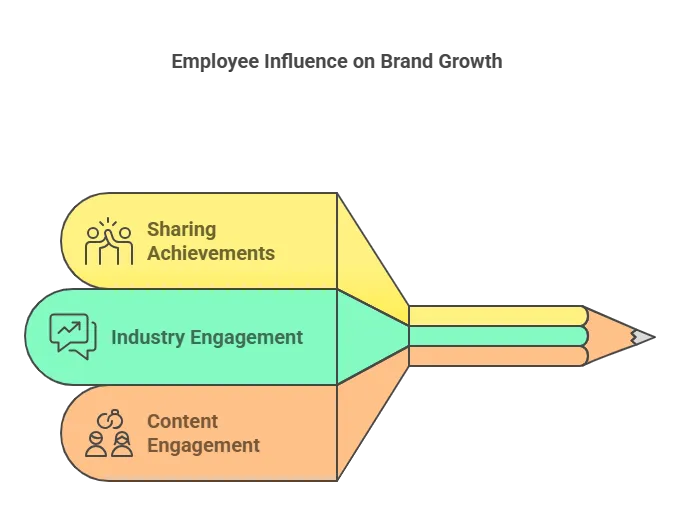
Facts inform, but stories inspire. A well-told narrative simplifies complex industry insights, helping executives position themselves as an industry expert on social media. Whether it’s a personal challenge overcome, an unexpected failure, or a moment of innovation, stories make abstract concepts concrete.
Social authority is built on trust, and trust is built through authenticity. Sharing real-life experiences—such as lessons learned from setbacks or pivotal career decisions—demonstrates credibility. It reassures audiences that the leader isn’t just an expert but also someone who has navigated challenges firsthand.
Stories aren’t one-way broadcasts; they spark conversations. A compelling narrative encourages reactions, shares, and discussions, allowing CXOs to shape industry discourse. This is a key strategy in social media credibility tips—building engagement through personal insights rather than corporate jargon.
Consistently integrating storytelling into content elevates CXO influence. Whether through LinkedIn posts, articles, live sessions, or keynotes, storytelling transforms passive audiences into active followers. This strategy cements thought leadership, making executives not just participants but trendsetters in their field.
Knowing when and where to post isn’t just a matter of convenience—it’s a strategic advantage. A well-timed LinkedIn post can drive engagement, while repurposing content across formats ensures wider reach. To maximize CXO influence, executives must align their content strategy with audience behavior, platform trends, and algorithmic preferences.
Social branding thrives on timing. Posting when your audience is most active increases engagement and ensures that your insights don’t get buried in crowded feeds. LinkedIn’s peak engagement times—typically mornings and mid-week—offer CXOs the best opportunity to capture attention and establish social authority.
Thought leadership isn’t limited to text-based posts. Executives can amplify their reach by repurposing content into different formats—videos, infographics, carousels, and articles. This approach strengthens brand influence and ensures that valuable insights reach different audience segments.

Understanding what works is as important as knowing what to post. Analyzing post performance, engagement metrics, and audience interactions helps CXOs refine their strategy. Social media credibility tips emphasize the importance of measuring impact, ensuring that content consistently positions an executive as an industry expert on social media.
Consistency builds recognition, but strategic posting builds authority. Instead of posting just to stay active, executives should focus on sharing meaningful insights at the right moments. This approach reinforces CXO influence, turning sporadic engagement into sustained thought leadership.
Thoughtful content distribution doesn’t stop at publishing. Responding to comments, joining relevant discussions, and resharing high-performing posts extend content longevity. Executives who actively participate in conversations strengthen their social branding and reinforce their credibility as industry leaders.
Connecting with key industry figures enhances visibility and credibility. A strong professional network amplifies brand influence, positioning a leader as a sought-after voice in their field. Engaging with thought leaders, commenting on trending discussions, and initiating meaningful dialogues strengthen social authority.

A CXO’s influence isn’t just about their content—it’s about the company they keep and the conversations they participate in.
Polls, live sessions, and newsletters elevate engagement and establish deep industry authority. Interactive content invites participation, fostering community-driven discussions that reinforce thought leadership.
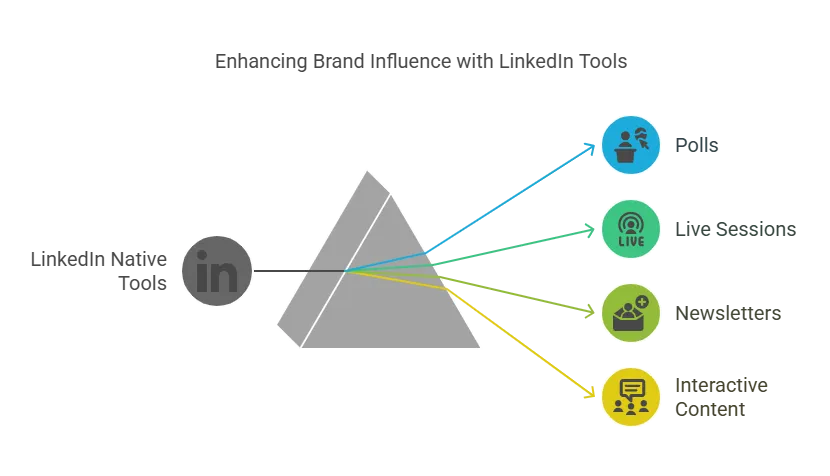
LinkedIn newsletters help executives sustain long-term engagement, while live video sessions humanize leadership, breaking down barriers between decision-makers and their audience. These tools offer a structured approach to social branding, helping leaders solidify their brand influence in a competitive digital space.
Even seasoned leaders can dilute their social branding by making avoidable mistakes:
Sporadic activity diminishes visibility and weakens CXO influence. Thought leadership requires a steady presence—posting valuable insights consistently keeps an executive relevant in industry discussions. An irregular posting schedule can cause audiences to disengage, weakening social authority. Leaders must maintain a strategic content calendar to sustain engagement and enhance their brand influence over time.
Excessive self-promotion can alienate your audience. Thought leadership isn’t about constantly selling—it’s about providing value. Executives who focus solely on their achievements or company offerings risk coming across as inauthentic. Instead, sharing industry perspectives, actionable insights, and collaborative discussions fosters trust and strengthens social branding. Striking the right balance between self-promotion and audience-centric content is crucial for maintaining credibility.
Broadcasting without interaction undermines credibility. Thought leadership isn’t a monologue; it’s a conversation. A CXO’s influence grows when they actively respond to comments, engage with followers, and participate in discussions beyond their own content. Failing to interact with the audience can make an executive seem distant or uninterested, weakening their social authority. Leaders who genuinely engage with their network build stronger connections, reinforcing their position as industry experts on social media.
At LexiConn, we don’t just manage personal branding—we build executive influence with a strategic, data-driven approach. Our expertise lies in crafting compelling narratives, amplifying thought leadership, and positioning CXOs as industry authorities.
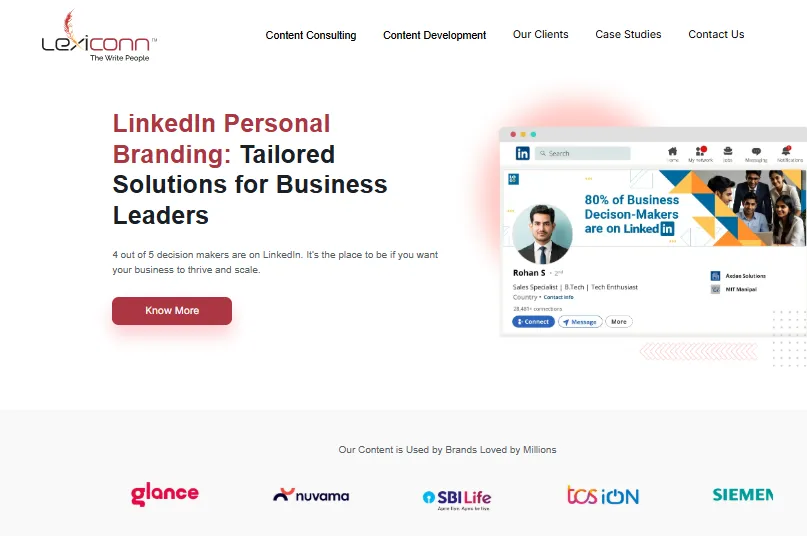
A powerful LinkedIn presence is no longer optional—it’s a leadership imperative. By embracing thought leadership, engaging meaningfully, and leveraging expert social branding strategies, executives can turn LinkedIn into a dynamic platform for influence. With LexiConn as your strategic partner, you’re not just building a profile; you’re building a legacy. Connect with LexiConn for a free 30-minute discovery session today.
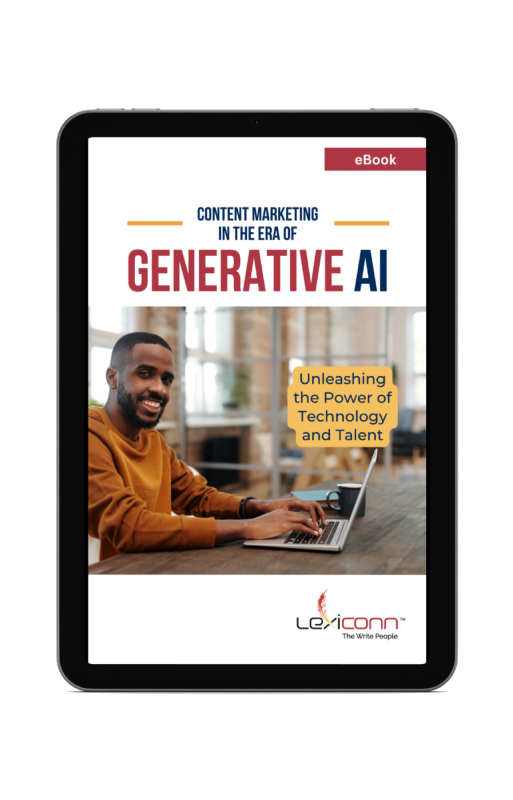
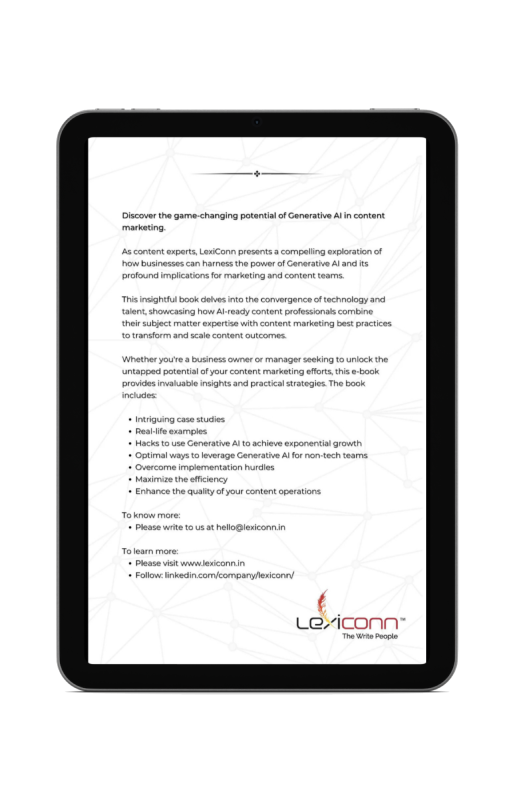
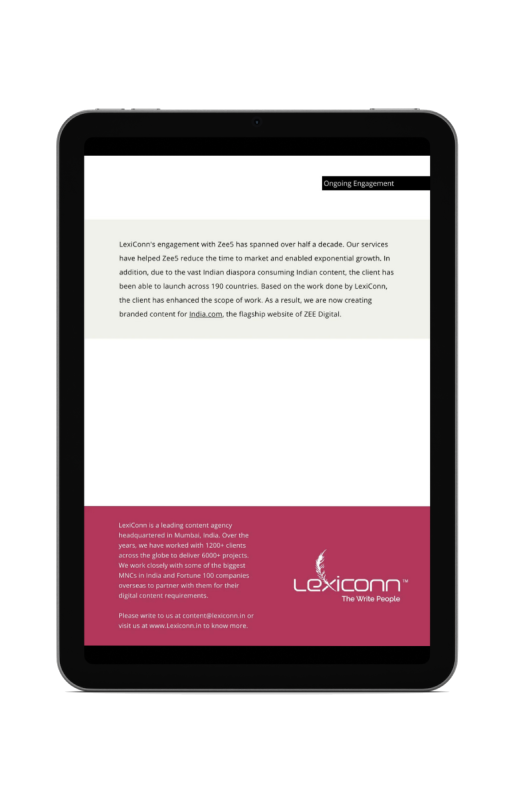
I have read and accept the Privacy Policy
Read More